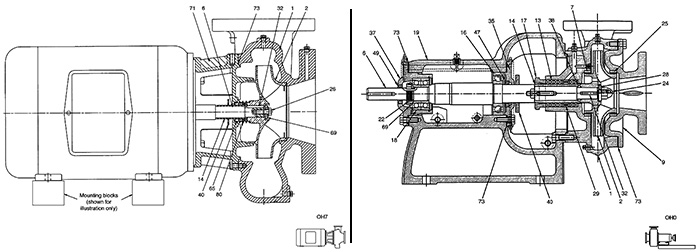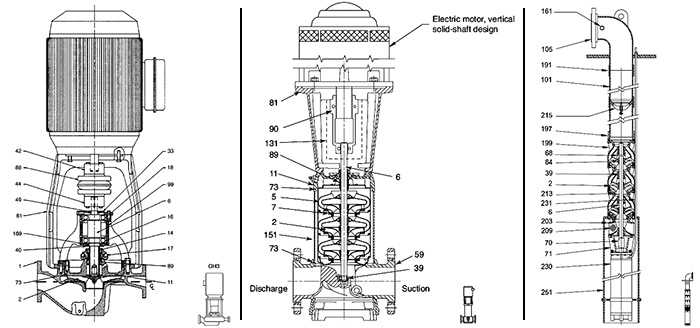Q. What pump types are included in the scope of the regulations set by the DOE Rule? A. The scope of the U.S. Department of Energy (DOE) Energy Conservation Standard and Test Procedure (10 CFR 431 Subpar Y and Appendix A) for certain clean water pumps includes five types of “clean water” rotodynamic pumps at two nominal speeds for each. The term “clean water pump” defines one for pumping water with a maximum non-absorbent free solid content of 0.016 pounds per cubic foot, and a maximum dissolved solid content of 3.1 pounds per cubic foot, provided that the total gas content of the water does not exceed the saturation volume, disregarding any additives necessary to prevent the water from freezing at a minimum of 14 degrees Farhenheit. The definition excludes pumps that are specifically designed for non-clean water utilities, such as solids-handling pumps, slurry pumps, American Petroleum Institute (API) pumps for oil and gas, and American Society of Mechanical Engineers (ASME) pumps for chemical process.
 Figure 1 (left). End suction closed coupled (ESCC) pump.
Figure 1 (left). End suction closed coupled (ESCC) pump. Figure 2 (right). End suction frame mounted (ESFM) pump (Graphics courtesy of Hydraulic Institute)
- End suction closed coupled (ESCC), see Figure 1
- End suction frame mounted (ESFM), see Figure 2
- In-line (IL), see Figure 3
- Radially split multi-stage in-line diffuser casing (RSV), see Figure 4
- Submersible turbine (ST), see Figure 5
 Figure 3 (left). In-line (IL) pump
Figure 3 (left). In-line (IL) pump Figure 4 (center). Radially split multi-stage in-line diffuser casing (RSV) pump
Figure 5 (right). Submersible turbine (ST) pump
- Clean water pump design
- 1 to 200 horsepower (hp) (150 kilowatts [kW]) at best efficiency point (BEP) rate of flow for full impeller diameter
- BEP rate of flow ≥ 25 gallons per minute (gpm) (1.57 liters per second [L/s]) for full impeller diameter
- Head ≤ 459 feet (140 meters) at BEP rate of flow for full impeller diameter
- Design temperature range of 14 to 248 degrees Farhenheit (minus 10 to 120 degrees Celsius)
- Nominal speed of rotation of 3,600 revolutions per minute (rpm) (2,880 to 4,320 rpm) or 1,800 rpm (1,440 to 2,160 rpm)
- Specific speed (Ns) ≤ 5,000 (U.S. customary units)
- Sanitary spec. pumps
- Nuclear spec. pumps
- Military spec. pumps
- Magnetically driven pumps
- Fire pumps
- Self-priming pumps
- Prime-assist pumps
- Circulator pumps
- Dedicated-purpose pool pump
Important Links:
• Download the regulatory text for the standard, test procedure and certification:
1. www.ecfr.gov/cgi-bin/retrieveECFR?n=pt10.3.431#sp10.3.431.y
2. www.ecfr.gov/cgi-bin/text-idx?rgn=div5&node=10:3.0.1.4.17#se10.3.429_159
• HI DOE links:
1. www.pumps.org/doerulemaking
2. www.pumps.org/DOE_Pumps.aspx
3. www.pumps.org/DOE_FAQs.aspx

